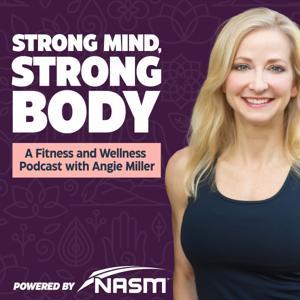In this “Master Instructor Roundtable,” co-hosts, and NASM Master Instructors, Wendy Batts, and Marty Miller, take a deep dive into some of the most persistent myths in strength training. Whether you’re a fitness newbie, a seasoned trainer, or just fascinated by health science, this lively discussion will help clear up common misconceptions that still linger in gyms everywhere.
The two tackle myths like the idea that lifting heavy weights automatically leads to bulkiness, especially for women, and whether kids and seniors should steer clear of strength training. They dispel the old “high reps for toning, low reps for bulk” rule, explain why “muscle confusion” isn’t the magic bullet it’s made out to be, and set the record straight on spot fat reduction and the safety of squats for your knees.
Drawing on up-to-date research, years of professional experience, and practical examples (from training young athletes to keeping grandparents strong and independent), the hosts break down how strength training impacts everyone—at every age. They cover how adaptations really work, the crucial role nutrition plays in muscle growth, and why proper technique and progression always trump trendy workout fads.
With plenty of humor, relatable anecdotes, and actionable advice, Wendy and Marty equip both trainers and clients with the facts they need to make smarter choices in and out of the gym. If you want to gain confidence in your training—or help others do the same—don’t miss this myth-busting episode that promises to educate and empower.
Show Notes & References:Schoenfeld, B.J., Grgic, J., Ogborn, D., & Krieger, J.W. (2017). Strength and hypertrophy adaptations between low- vs. high-load resistance training: A systematic review and meta-analysis. Journal of Strength and Conditioning Research, 31(12), 3508–3523
Lorenz, D., Reiman, M., & Walker, J. (2010). Periodization: Current review and suggested implementation for athletic rehabilitation. Sports Health, 2(6), 509–518.
Myer et al. (2014). Sixty minutes of what? A developing brain perspective for activating children with an integrative exercise approach. British Journal of Sports Medicine, 48(12), 947–953.
Westcott, W.L. (2012). Resistance training is medicine: Effects of strength training on health. Current Sports Medicine Reports, 11(4), 209–216.
Ramírez-Campillo et al. (2013). Effects of abdominal exercise on abdominal fat. Journal of Strength and Conditioning Research, 27(12), 3419–3425
Hartmann, H., Wirth, K., & Klusemann, M. (2013). Analysis of the load on the knee joint and vertebral column with changes in squatting depth and weight load. Sports Medicine, 43(10), 993–1008.
Peterson, M.D., Sen, A., & Gordon, P.M. (2011). Influence of resistance exercise on lean body mass in aging adults: A meta-analysis. Medicine & Science in Sports & Exercise, 43(2), 249–258.
Mitchell et al. (2012). Sarcopenia: Age-related muscle loss mechanisms and therapy. Biogerontology, 13(1), 1–11.
Lopez et al. (2018). Effects of resistance training on older adults: A systematic review. Journal of Aging and Physical Activity, 26(4), 608–618.
The content shared in this podcast is solely for educational and entertainment purposes. It is not intended to be a substitute for professional advice, diagnosis, or treatment. Always seek out the guidance of your healthcare provider or other qualified professional. Any opinions expressed by guests and hosts are their own and do not necessarily reflect the views of NASM.
Introducing NASM One, the membership for trainers and coaches. For just $35/mo, get unlimited access to over 300 continuing education courses, 50% off additional certifications and specializations, EDGE Trainer Pro all-in-one coaching app to grow your business, unlimited exam attempts and select waived fees. Stay on top of your game and ahead of the curve as a fitness professional with NASM One. Click here to learn more. https://bit.ly/4ddsgrm







































